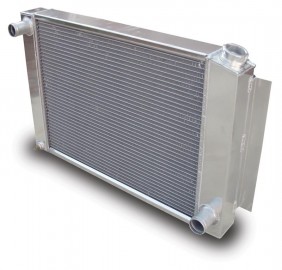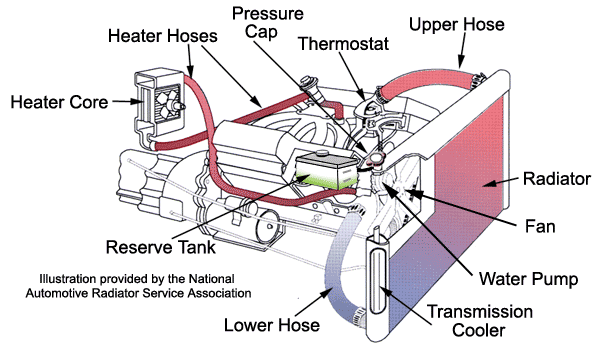Cooling System Repair & Service
 |
At Capital Transmission we check your entire cooling system for leaks, the level of your coolant, and recommend a flush if necessary.
Coolant (anti-freeze) protects your engine from overheating and from freezing. The coolant's effectiveness can diminish over time and lose many of its protective properties, causing your radiator to rust and corrode. The cooling system itself can get clogged with built-up deposits from oil, grease, scale, hose decomposition, and other materials.
Most drivers know it's recommended that a vehicle's oil should be changed at regular intervals. Drivers typically don't realize, however, about the proper intervals for changing their vehicle's other vital fluids. For the cooling system, check your car's owner manual to see the recommended interval for changing the coolant in your vehicle, but you'll want to come to Capital Transmission if you have any of the following symptoms:
|
It is very important to use the correct type of coolant in your vehicle. There are many different kinds of coolant available on the market, and it’s imperative that we not only use the best-quality product, but also the right product for your specific vehicle. We are committed to providing a very thorough cooling system repair and service, and our expert knowledge will ensure that the best product is matched to your vehicle.
How Your Vehicle’s Cooling System Works
 |
Internal combustion engines are often cooled by passing a liquid called engine coolant through the engine block, where it is heated, then through the radiator itself where it loses heat to the atmosphere, and then back to the engine in a closed loop.
Engine coolant is usually water-based, but may also be oil-based. It is common to employ a water pump to force the engine coolant to circulate, and also for an fan to force air through the radiator.
In automobiles with a liquid-cooled internal combustion engine, a radiator is connected to channels running through the engine and cylinder head, through which a liquid (coolant) is pumped. This liquid may be water (in climates where water is unlikely to freeze), but is more commonly a mixture of water and antifreeze in proportions appropriate to the climate. Antifreeze itself is usually ethylene glycol or propylene glycol (with a small amount of corrosion inhibitor).
A thermostat is placed between the engine and the radiator to make sure that the coolant stays above a certain preset temperature. If the coolant temperature falls below this temperature, the thermostat blocks the coolant flow to the radiator, forcing the fluid instead through a bypass directly back to the engine. The coolant will continue to circulate like this until it reaches the design temperature, at which point, the thermostat will open a valve and allow the coolant back through the radiator.
In order to prevent the coolant from boiling, the cooling system is designed to be pressurized. Under pressure, the boiling point of the coolant is raised considerably. However, too much pressure will cause hoses and other parts to burst, so a system is needed to relieve pressure if it exceeds a certain point. The job of maintaining the pressure in the cooling system belongs to the radiator cap. The cap is designed to release pressure if it reaches the specified upper limit that the system was designed to handle. Prior to the '70s, the cap would release this extra pressure to the pavement. Since then, a system was added to capture any released fluid and store it temporarily in a reserve tank. This fluid would then return to the cooling system after the engine cooled down. This is what is called a closed cooling system.
In a vehicle’s cooling system, the radiator transfers the heat from the fluid inside to the air outside, thereby cooling the engine. Radiators are also often used to cool automatic transmission fluids, air conditioner refrigerant, and sometimes to cool motor oil or power steering fluid. Radiators are typically mounted in a position where they receive airflow from the forward movement of the vehicle, such as behind a front grill.
If overheating occurs, it can cause damage such as a blown head gasket or radiator hose. When your cooling system is not functioning properly or has a leak, it’s very important to get your vehicle inspected and repaired as soon as possible.
